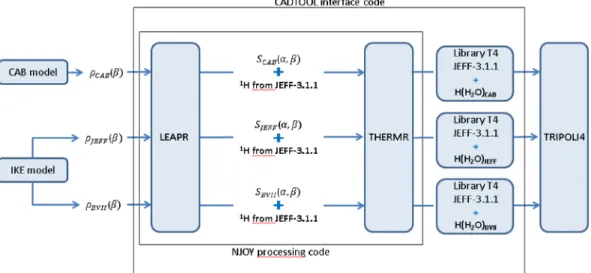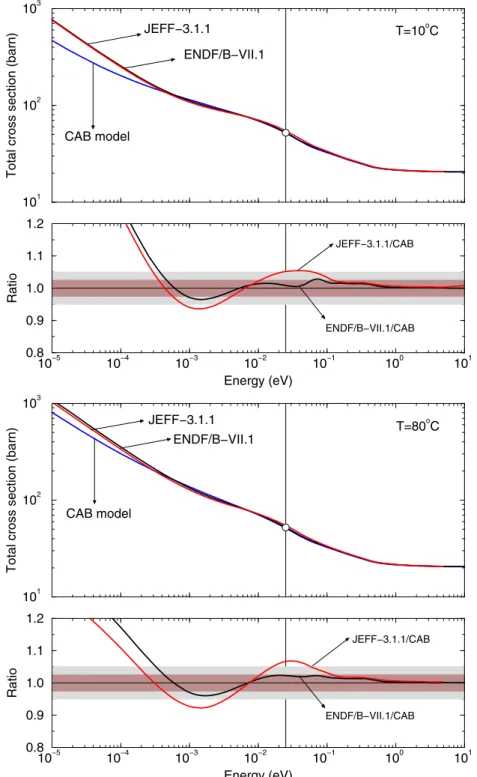Impact of the thermal scattering law of H in H$_2$O on the isothermal temperature reactivity coefficients for UOX and MOX fuel lattices in cold operating conditions
Texte intégral
Figure




Documents relatifs
The aim of the paper was to discuss the usefulness of accounting for the Fresnel volume (FV) and for the Interface Fresnel Zone (IFZ) for simulating the amplitude of the
If it can be demonstrated that σ L is dominated by photon absorption on a ground state kaon, the K + form factor can be extracted through a measurement of the t-dependence of
It can be seen from Figure 3 that the room temperature value of the rate constant measured in the present work for the C( 1 D) + CH 4 reaction is in excellent agreement with
In terms of the temperature dependence of the quenching rate, previous work has shown that the rate constant for this process displays a negative temperature
Finally, to set a contrast to the widely used cattle data [ 12 , 13 , 16 , 17 ], we screened for optimal values of τ and ω with respect to predictive ability, inflation
Like for classical nociceptive processing, we could find an inverse relationship between blood pressure reactivity and pain sensitivity in the present thermal
is accepted as a good one to describe the modulation in the INCI phase; whereas in the INC2 phase, one has observed the loss of the linear temperature dependence for à(T) and
Risk Factors Associated With Acute Respiratory Distress Syndrome and Death in Patients With Coronavirus Disease 2019 Pneumonia in Wuhan, China. Clinical course and
![Fig. 5. Interpolation of the model parameters established by Mattes and Keinert [28] between 6 ° C to 80 ° C](https://thumb-eu.123doks.com/thumbv2/123doknet/12938555.374808/8.892.160.734.97.586/fig-interpolation-model-parameters-established-mattes-keinert-c.webp)




